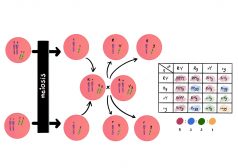Definition
noun
A ketohexose monosaccharide, (3S,4R,5S)-1,3,4,5,6-Pentahydroxyhexan-2-one, with a chemical formula of C6H12O6, and the laevorotatory configuaration (L-sorbose) is used as an intermediate in the synthesis of vitamin C
Supplement
Monosaccharides are the simplest form of carbohydrates. They may be classified based on the number of constituent carbon atoms. For instance, hexose is a monosaccharide with six carbon atoms. They may also be classified based on the functional group present: aldose and ketose. Sorbose is one of the hexose monosaccharides and classified as a ketose.
Sorbose is a ketohexose with a chemical formula of C6H12O6. It has sweetness similar to sucrose. L-sorbose is the naturally-occurring type of sorbose.1 It has been found at trace levels in certain plants and fruits such as cocoa beans. The bacterium Acetobacter xylinum produces sorbose as a secondary product through the oxidation of sorbitol. It may also be formed by the oxidation of D-galactose.
Sorbose is a ketose used commercially in the synthesis of vitamin C (ascorbic acid).
IUPAC name:
- (3S,4R,5S)-1,3,4,5,6-Pentahydroxyhexan-2-one
Chemical formula:
Also called:
- sorbinose
- L-xylo-Hexulose
See also:
Reference(s):
1 Sorbose. (n.d.). Wikipedia.org. Retrieved from https://en.wikipedia.org/wiki/Sorbose
2 Sorbose. (n.d.). National Center for Biotechnology Information. Retrieved from https://pubchem.ncbi.nlm.nih.gov/compound/L-sorbose#section=Natural-Occurring-Sources







